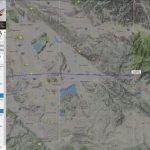National home insurance rates to rise
Putting to rest a rumor, Jerry Davies, Farmers Insurance assistant vice president for media and public relations for North America, confirmed that his company would continue to renew policies for Hill homeowners.
Davies said renewal would be contingent upon each property passing an inspection by a Farmers field inspector. “Our policies have not changed,” Davies said. “We will be looking at homes prior to renewal times.” Inspection would, said Davies, focus on clearance and abatement and any other property and dwelling issues that impede fire resistance. (See www.fire.ca.gov for a checklist on how to make one’s home fire safe and for 100 feet clearance guidelines and rationales.)
Davies explained current Farmers’ policy is that clearance must extend 100 feet from a dwelling or improved structure, or to the policyholder’s property line, whichever is nearer. “Brush must be cleared to within 100 feet of the home or up to the property line,” said Davies. He noted this is his company’s most recent directive that had been added a few years ago. An adjacent unabated property, not owned by the policyholder, should have no effect on the policyholder’s renewal under current Farmers guidelines.
The rules regarding expansion of clearance around a dwelling from 30 to 100 feet are found in state Public Resources Code 4291 and are required in State Responsibility Areas (including the Hill) specifically designated as mountainous and forested. According to the 2005 revised guidelines, “Clearing an area of 30 feet immediately surrounding your home is critical. This area requires the greatest reduction in flammable vegetation. The fuel reduction zone in the remaining 70 feet [or to property line] will depend on the steepness of your property and the vegetation.” In general, greater steepness requires greater clearance. Farmers’ policyholders should contact their agents with any specific questions.
In other news, Dr. Robert Hartwig, economist and president of the Insurance Information Institute headquartered in New York City, reported that homeowner insurance rates are likely to rise by 10 percent or more this year due to the extraordinarily high $32 billion in claims from natural disasters in 2011. Hartwig posited the 10-percent figure in a public radio interview on Monday, Jan. 16. Hartwig, in a Dec. 30 report, noted the 2011 losses nearly doubled the $18.6 billion average in “catastrophe-caused direct insured losses insurers generally incur over the first nine months of any given year.”
The federal National Oceanic and Atmospheric Administration announced in December that the U.S. was the site of 12 separate 2011 weather or climate disasters, with each causing at least $1 billion in aggregate damage. Disasters included 555 tornadoes that struck from April 4 through April 30, 2011 through the Midwest and Southeast. Disasters included an EF-5 tornado that hit Joplin, Mo., on May 22. It was the strongest tornado to hit the U.S. in decades and caused 158 fatalities.
The previous record, set in 2008, was nine disasters, each with $1 billion or more in damage.









